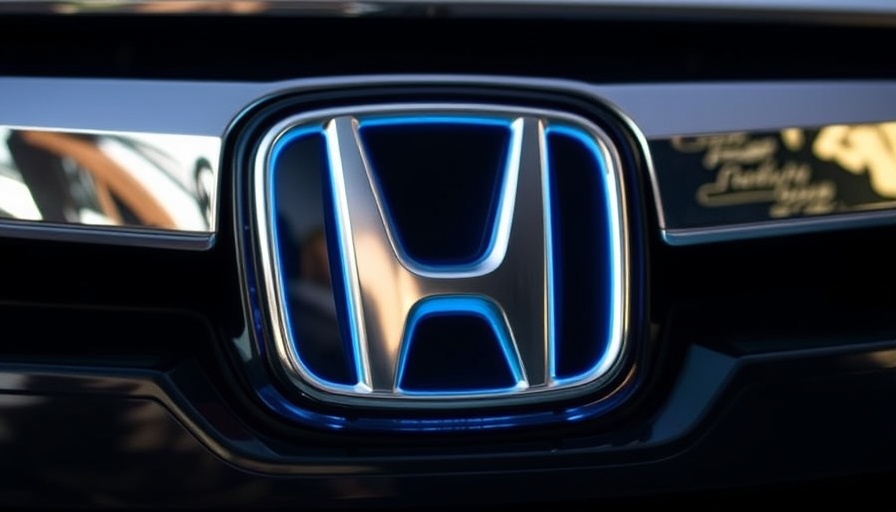
Understanding Honda's Cease-and-Desist Scenario
The recent cease-and-desist order issued by the California New Car Dealers Association (CNCDA) against American Honda Motor Co. and Sony Honda Mobility of America has ignited heated debates in the automotive industry. The CNCDA alleges that these companies are violating California state law by engaging in direct-to-consumer sales of their new Afeela vehicles. This situation raises significant questions about how car manufacturers navigate the landscape of dealership laws while venturing into direct sales.
The Legal Landscape of Automotive Sales in California
California’s laws are designed to protect franchised dealerships from potentially disruptive direct sales practices by manufacturers. Under these laws, automakers cannot compete with their own dealer networks, and CNCDA President Brian Maas emphasized, “Automakers and their affiliates are not allowed to compete with their own franchised dealers.” This statement underscores the purpose of these regulations: preserving a market structure that safeguards jobs and investments essential for local economies.
Exploring The Afeela Brand
Afeela, a new electric vehicle brand resulting from a partnership between Honda and Sony, pushes the boundaries of technological innovation in the automotive sector. Positioned as a high-tech, luxury vehicle, the Afeela 1 is designed with AI integrations and advanced driver assistance systems. Slated for production later this year and public availability in 2026, it aims to captivate tech-savvy consumers who prioritize smart features and a seamless buying experience.
The Implications of Direct-to-Consumer Sales
Direct-sales models can offer consumers a more straightforward buying process, with simplified online reservations and transactions, as claimed by Sony Honda Mobility CEO Shugo Yamaguchi. However, the CNCDA’s objection highlights the potential danger such practices pose to traditional dealerships, which rely on maintaining relationships with manufacturers for support and sales. The ongoing debate illustrates the tensions between innovation and regulation in the automotive market.
Comparative Perspectives: Volkswagen's Similar Legal Struggles
This isn’t Honda's first run-in with California’s dealership laws. The CNCDA issued a similar cease-and-desist letter to Volkswagen in January over its sales activities through the Scout brand. Maas commented that these practices threaten the job security and investments that California’s dealership laws are meant to protect.
What This Means For the Future of the Automotive Industry
The challenges facing Honda and Volkswagen may herald a larger trend of manufacturers seeking more direct access to consumers. As electric vehicles continue to rise in demand, pressure will increase for automakers to innovate sales models. The lesson here for dealerships is clear: adaptation and collaboration will be crucial in navigating the evolving landscape. Dealerships may need to enhance their service offerings and explore value-added choices, like financing options, to remain competitive.
For dealerships, awareness of current trends and laws is pivotal. Those looking to finance cars need to understand the methods available for calculating interest rates, and common car loan terms. Knowledge about these aspects can empower consumers and dealerships alike as they navigate the financing landscape together.
For dealerships facing potential disruption, emerging technologies could enhance their financing processes. This includes integrating tools such as used car loan calculators to help assess the value of vehicles and provide prospective buyers with clear financing options.
Conclusion: Navigating the Path Forward
The current landscape of automobile sales in California poses significant challenges for both manufacturers and dealerships. As regulatory and market dynamics shift, understanding these complexities will be crucial for dealerships looking to stay competitive. It’s essential to stay informed about new technologies and financing methods to assist customers effectively while adapting to evolving consumer demands.
 Add Row
Add Row  Add
Add 




Write A Comment